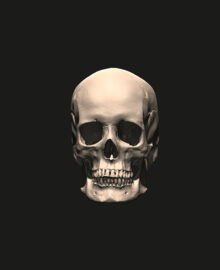- Lesson Details
- References
- Assignments
In this series, artistic anatomist Rey Bustos brings you a fun, unique introduction to the anatomy of the human body. In this seventh lesson of the series, Rey shows you the anatomy of the head and neck, and goes over some features of the face. Rey will begin by lecturing on the blackboard, breaking down each bone and muscle of the region.
Recommended Course Material: Rey’s Anatomy: Figurative Art Lessons From the Classroom
24563 views
Reference 3D (11)
This lesson has Assignments. Subscribe now

 UPDATE! October 1st, 2023: This version of the website will no longer receive updates. Please transition to the new website for the best experience.
UPDATE! October 1st, 2023: This version of the website will no longer receive updates. Please transition to the new website for the best experience. 



















